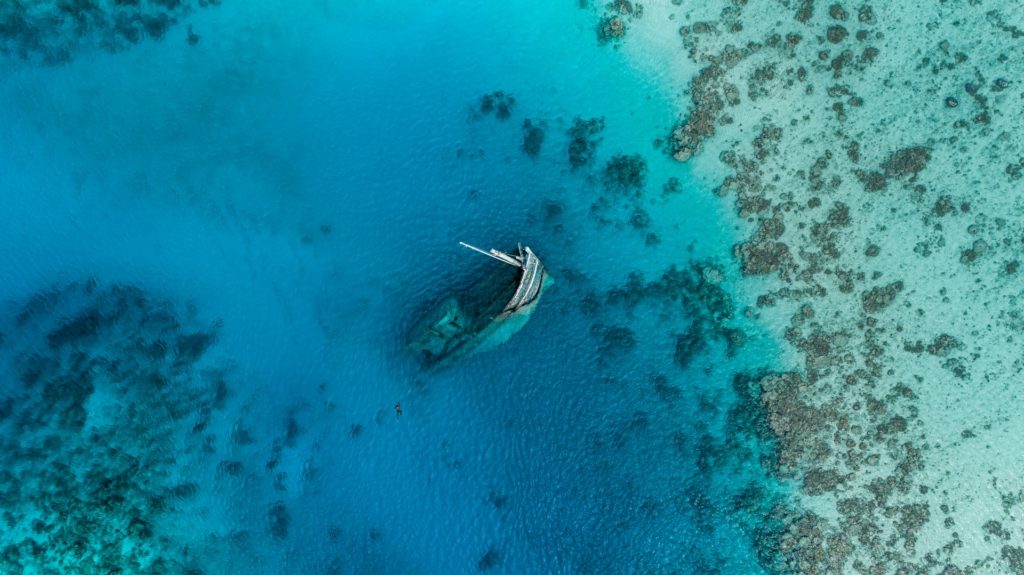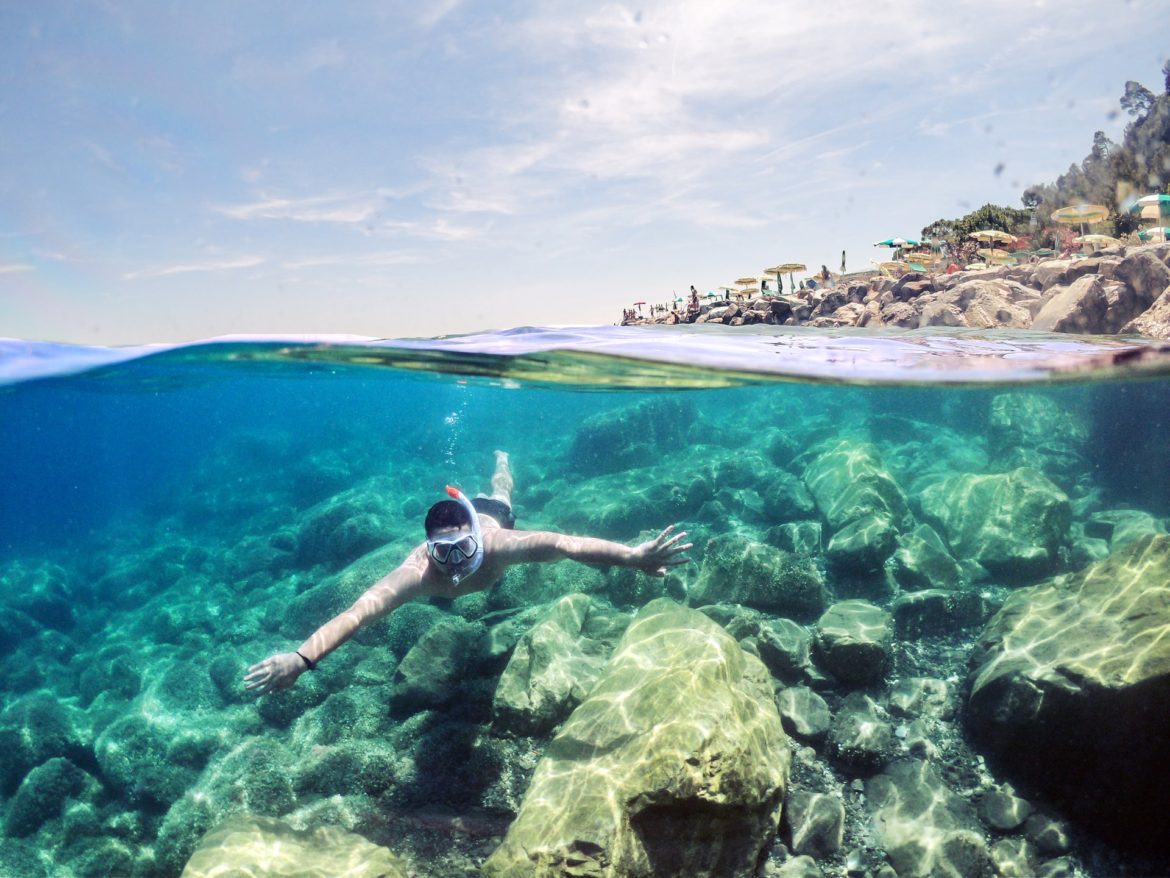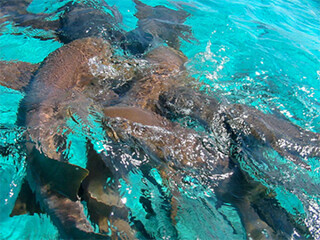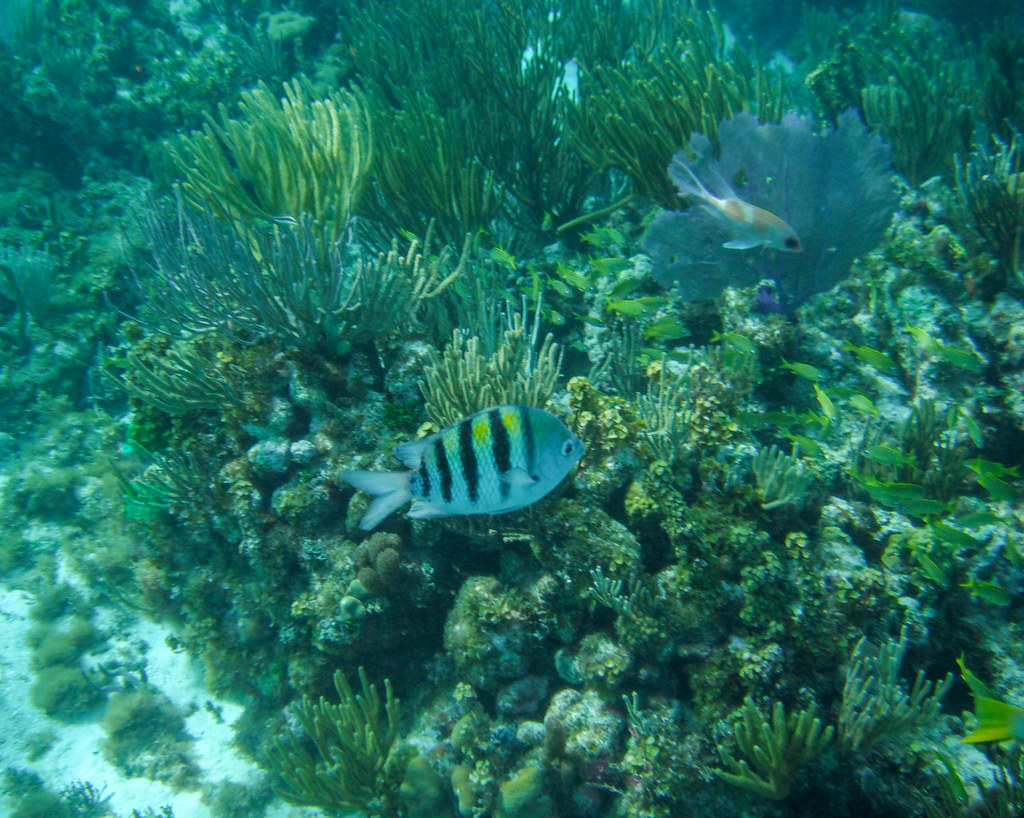These top Caribbean snorkeling destinations, I discovered after traveling to 20 Caribbean islands. Snorkeling connects us to the essence of the marine biodiversity. The well-known turquoise waters of the Caribbean brings thousands of travelers here for relaxation and adventure. For a decade, I worked and played as an Acupuncturist-at-Sea on cruise ships, giving me opportunities to explore the infinity of these breathtaking islands and waters. Read on to discover my top 8 snorkeling destinations in the Caribbean.
The Caribbean’s Biodiverse Marine Flora and Fauna
The Caribbean Sea became into being three to four million years ago. This is when the Greater Caribbean became isolated from the Pacific Ocean, after the closing of the Isthmus of Panama. Since then, it developed their own unique reef life, with about 65 species of hard corals and some 500 to 700 species of fish.
My Caribbean snorkeling adventures gave me a colorful window into a surreal menagerie of marine life, such as, southern stingrays, green and hawksbill sea turtles, trumpetfish, wrasses, triggerfish, sergeant majors, snappers, grunts, groupers, eels, angelfish, sea urchins, sea horses, parrotfish, barracuda, sea anemones, nurse sharks and more. This rainbow of marine wildlife coexists with coral species, for example, finger, brain, elk horn, staghorn, lettuce, pineapple, star, lace, rose and sea fans.
8 Top Caribbean Snorkeling Destinations
Antigua and Barbuda: Stingray City
This 2-island nation is bejeweled with 365 turquoise beaches and surrounding coral reefs. Stingray City is one of the best destinations in the Caribbean to swim with stingrays. It’s just a 10-minute boat ride to the reef, where visitors launch from a floating platform into the sea. Here, in waist-deep waters visitors swim and even take photo-ops with the southern stingrays. Also, known as the “puppy dogs of the sea,” this species is friendly and even greets you in their home waters. Plus, there are colorful tropical fish to see. For more information on these pristine islands, see my TravelBlog on this site.
Aruba Shipwreck Snorkeling

Aruba’s crystal-clear waters make for wonderful snorkeling, especially to see sunken shipwrecks. Known for its high Trade Winds, many ships have found their fate at the bottom of the sea near Aruba. For example, three popular shipwreck snorkeling sites are the following: SS Antilla, Baboo & Kappel. SS Antilla is the second largest shipwreck in the Caribbean. As a German U-boat for attacking The Netherlands, its Captain intentionally sank the ship, rather than surrender it to the Dutch. From Eagle or Palm Beach, boat rides go to the snorkeling site of SS Antilla. Overall, I enjoyed my time here seeing my first shipwreck underwater and the beautiful tropical fish. However, I came up against choppy waters and limited visibility due to the Trade Winds making for quite the adventure.
Read More!
Aruba Beaches & Highlights – A Dutch Caribbean Paradise
Snorkeling with reef-safe sunscreens mandates not using chemical sunscreen with Oxybenzone or Octinoxate.
Bonaire Snorkeling
This Dutch Caribbean Island near Aruba is a spectacular place for snorkeling without the crowds, like in Aruba. This island marks all its 62 diving and snorkeling spots on the roads with yellow stones along its 226 miles of coastline. Unique to Bonaire is that most snorkeling sites are accessible close to shore, without needing to pay for a boat. Also, the ocean plunges into dark depths close to the shore. Even though Bonaire’s reefs are some of the most beautiful in the world, much of them were damaged by storms in the 90’s. Most importantly, the island helps to sustain the reefs with replanting projects to proliferate them.
I started my Bonaire adventure on a sailing catamaran throughout the Bonaire National Marine Park (BNMP), including the oldest Marine Reserve in the world. Then, we snorkeled from the boat in the waters with the coral reef about 5 meters below. Here, I saw the biggest fish that I have ever seen while snorkeling, looking like a Grouper. Unfortunately, I missed it with my GoPro as it was quite the spectacle. However, I filmed the steep drop off of the ocean floor into the dark abyss, which was haunting for me. This left me feeling eerily humble and vulnerable. Also, the BNMP includes the small uninhabited island, Klein Bonaire.
Carlisle Bay Barbados
The rich marine biodiversity in Carlisle Bay Barbados consists of more than 350 species of flora and fauna. These live on the scattered patch reefs and artificial reefs in the form of sunken ships. Close to the shore, less than 200 meters from the beach, there are 6 shipwrecks. They are, from most shallow wreck to the deepest: Barge, Cornwallis, Berwyn, Bayan Queen, C-Trek and Eilon. The wrecks lay in shallow waters, between 3 & 17 meters, depending on the tide. I enjoyed snorkeling here to see the marine life using the wreck as a ground for coral reef and sponges, surrounded by many fish, sea turtles and stingrays.
Related: Barbados Carlisle Bay Snorkeling – Shipwrecks, Turtles & Colorful Fish
Belize and West Bay offer snorkeling adventures to the Mesoamerican Reef, the largest in the western hemisphere.
Belize: Hol Chan Marine Reserve and Shark Ray Alley
Hol Chan Marine Reserve is where I experienced my first snorkeling experience of my life. The Belize Barrier Reef is part of the Mesoamerican Reef, the largest barrier reef in the western hemisphere, stretching 700 miles from the Yucatan Peninsula down through the Honduran Bay Islands.
Shark Ray Alley is part of the Hol Chan Marine Reserve. It is a surreal menagerie of southern stingrays, harmless nurse sharks, sea turtles and a spectrum of tropical fish. It’s the ideal setting for a snorkeling novice with its warm, inviting biodiverse waters
West Bay, Roatan Island, Honduras
One of the best kept secrets of the Caribbean is West Bay in Roatan Island. West Bay is a laid back beach with beautiful snorkeling in the shallow waters of the bay. Here, snorkelers can relax on white sandy beach and swim not far in the water to see the beautiful coral reefs, part of the Mesoamerican Reef, the largest barrier reef in the western hemisphere. During my time at West Bay, it was rainy season so I didn’t snorkel. A local man told me the best time for clear water is the dry season April – July. He also said the mysterious whale sharks are seen in these waters in the dry season.
Related: Roatan Island Beaches & Jungles – A Honduras Paradise
Grenada’s Underwater Sculpture Park
From the pristine white sands and turquoise waters of Grand Anse Beach, a 15-minute boat ride takes visitors to the Underwater Sculpture Park. Overall, this one-of-a-kind park has 75 stunning underwater sculptures. It’s now National Geographic’s top 25 Wonders of the World. It showcases popular works, for example, Vicissitudes, featuring a ring of children holding hands and The Lost Correspondent, portraying a man sitting at a desk with a typewriter.
Related: A Grenada Travel Guide to the Caribbean’s “Spice Island”
Grand Cayman Stingray City Sandbar
Lastly, Stingray City encompasses a group of sandbars located 25 miles off the shore of Grand Cayman. Here, you can swim with, feed, and take memorable photo ops with these friendly rays. Overall, this is one of the most popular sites in the Cayman Islands with spectacular marine wildlife among the coral reefs.
Over the years, fisherman anchored in the sandbar to clean their catch, attracting the southern stingrays. Also, by continuing to feed the stingrays, their population has grown to 120 southern stingrays that claim this area as their home. Here, I enjoyed the beautiful coral reefs and tropical fish even more than interacting with the stingrays.
Related: The Grand Cayman Beaches, Snorkeling & Shopping
However, Endangered Caribbean Coral Reefs & Coral Bleaching
Unfortunately, the rapid decline of this incredible ecosystem is in dire peril. The Caribbean Coral Reefs are particularly vulnerable to global warming and ocean acidification. Furthermore, reefs thrive in water temperatures between 73 and 84 degrees F. (23 -29 C.) Overall, with water temperatures and acidification rising along with pollution, overfishing and overtourism, corals bleaching is spreading like an underwater white fire.
What is Coral Bleaching?
Coral and algae have a symbiotic relationship, with the coral feeding on the algae giving it color. When stressed by warming waters, pollution or acidification, the algae leaves the coral tissue. Thus, the coral starves and loses color or bleaches. Observing coral bleaching all over the world in my travels, I learned firsthand the consequences of global warming and pollution to this delicate ecosystem.
Coral Restoration Projects
Coral Restoration Projects aims to educate, cultivate, outplant and monitor the reef-building coral. For example, our snorkeling guide in Bonaire was the first to inform me on outplanting. This is just like it sounds, literally Coral farming, growing coral in nurseries and transplanting in vulnerable area. However, all of this is futile if the ocean waters temperatures and acidification rise. Additionally, see this informative website: https://www.coralrestoration.org/restoration





